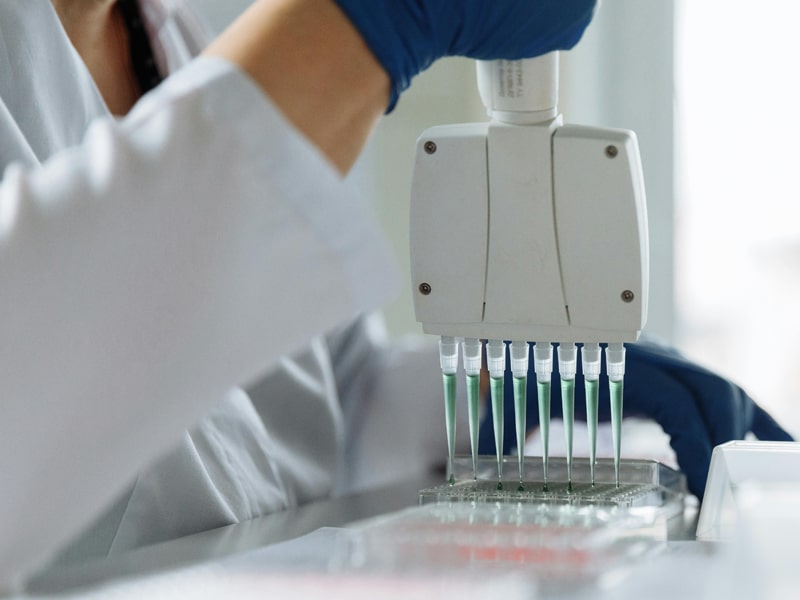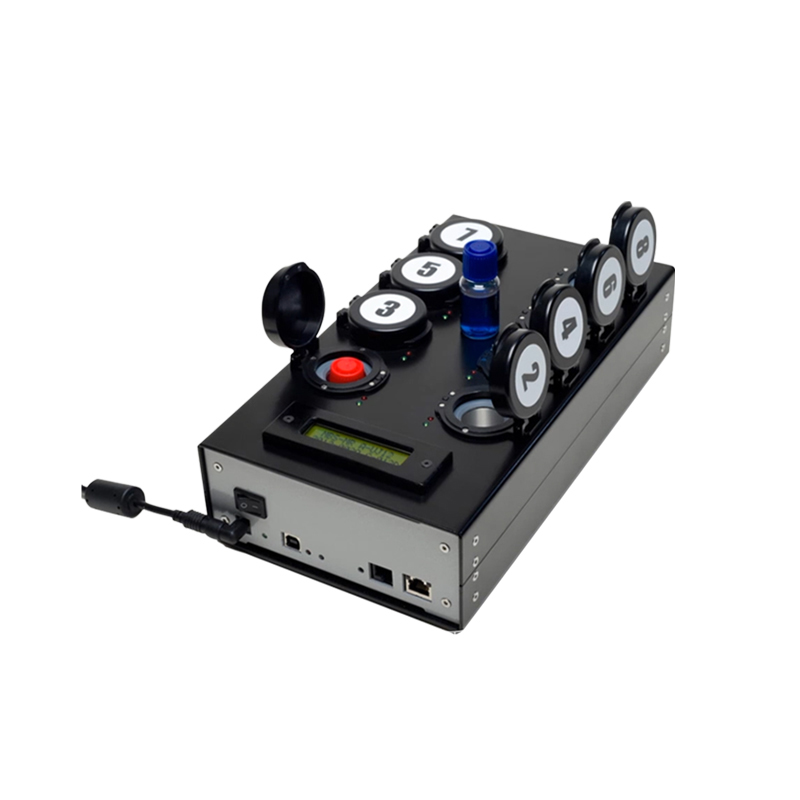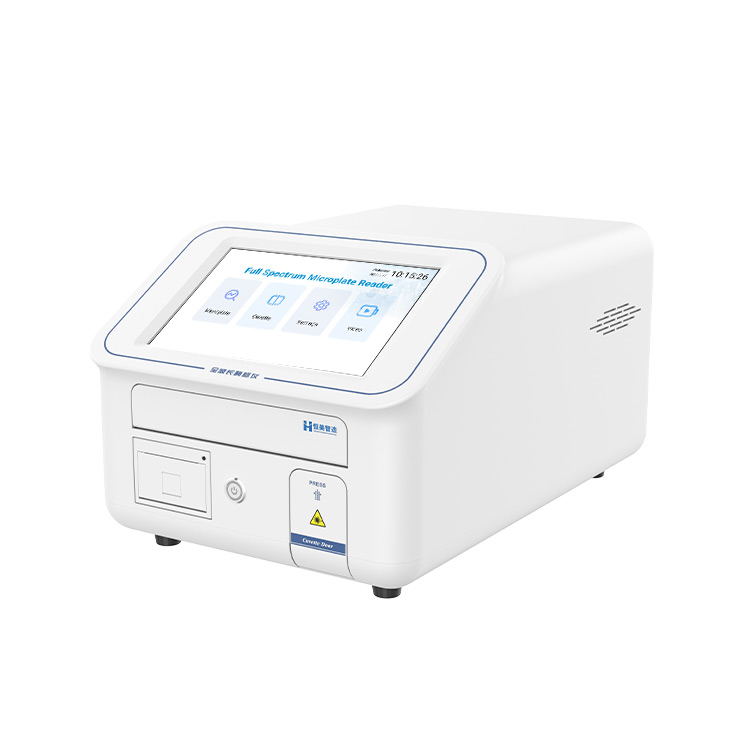Background and core requirements of the plan
In the field of water quality safety monitoring, traditional microbial detection methods such as multi tube fermentation and membrane filtration have pain points such as cumbersome operation, long time consumption (48-72 hours), and dependence on sterile environments. Hengmei programmable quantitative sealing machine is based on enzyme substrate method (compliant with national standards such as GB5750-2006), combined with intelligent packaging technology, providing an efficient, accurate, and low-cost solution for water quality microbial detection. This scheme is based on the Hengmei HM-FKJ programmable quantitative sealing machine, equipped with specialized reagents and consumables, to achieve rapid quantitative detection of total coliforms, fecal coliforms, and Escherichia coli in water samples.

Core equipment and technological advantages
Hengmei HM-FKJ Programmable Quantitative Sealing Machine
Intelligent packaging: supports 51 hole or 97 hole fixed quantity detection disks, sealing speed ≤ 12 seconds/hole, single sample operation can be completed in 1 minute, and results can be obtained within 24 hours.
Strong environmental adaptability: no need for sterile rooms, can operate in a regular clean environment; Wide working temperature range (-10 ℃~50 ℃), supporting field emergency testing.
High reliability: no leakage, no hole design, service life of over 5 years, can detect more than 50000 samples, and the fault self diagnosis function simplifies maintenance.
Supporting Hengmei instruments and consumables
Three purpose UV analyzer: used for rapid detection of quantitative discs after sealing, supporting UV/visible dual-mode to improve the efficiency of result interpretation.
Sterile quantitative bottle (100mL): matched with enzyme substrate method reagents to ensure the accuracy of water sample and culture medium mixing.
Enzyme substrate assay kit: contains specific substrates ONPG/MUG, which can directly determine the target bacterial species through color/fluorescence reactions with low false positive rate.
Application scenarios and solutions
1、Government regulation and emergency monitoring
Scenario requirement: Quickly screen for microbial contamination risks in water samples such as surface water and drinking water pipelines.
Solution:
Using an HM-FKJ sealing machine in conjunction with a 97 well quantitative disc, a single batch can detect 2419 MPN/100ml water samples, and batch analysis can be completed within 24 hours.
Paired with a three purpose UV analyzer, it can quickly interpret fluorescence signals on site without the need to return to the laboratory, making it suitable for sudden water pollution incidents.
2、Daily water quality monitoring of water companies
Scenario requirement: High frequency microbial index monitoring of factory water and pipeline end water.
Solution:
Using a 51 well quantitative disk (detection range 0-200 MPN/100ml), combined with enzyme substrate assay reagents, hundreds of samples can be detected daily.
The device supports one click drainage and automatic energy-saving functions, reducing operation and maintenance costs; The quantitative disk counting function avoids manual recording errors.
3、Production water testing in the food and beverage industry
Scenario requirement: Ensure that raw water and finished water meet hygiene standards (such as controlling the total bacterial count in bottled water).
Solution:
Utilizing high-precision sealing technology of sealing machines to prevent sample contamination and ensure the reliability of test results.
Cooperate with Hengmei's dedicated silicone disk to achieve complete isolation between the sample and the culture medium, avoiding cross contamination.
4、Wilderness and emergency scenarios
Scenario requirement: Rapid detection without stable power and laboratory conditions.
Solution:
The HM-FKJ sealing machine weighs only 14.2kg and supports portable movement; Preheating time ≤ 3 minutes, noise<48dba, suitable for outdoor environment.
Paired with quantitative bottles and reagents, a single person can complete the entire process from sampling to sealing.
Technical parameters and operating procedures
1、Key parameters
Sealing speed: ≤ 12 seconds/hole (51 hole or 97 hole disk)
Preheating time: ≤ 3 minutes
Detection range: 51 well disk 0-200 MPN/100ml, 97 well disk 0-2419 MPN/100ml
Working voltage: AC220V ± 10%, low power consumption, stable operation.
2、Standardized operating procedures
Step 1: Start up preheating, connect the waste pipe, and ensure that the instrument passes the self-test.
Step 2: Mix the water sample with enzyme substrate reagent and inject it into a quantitative tray to avoid bubble interference.
Step 3: Place the quantitative tray into the sealing machine, and the equipment will automatically complete the sealing process (12 seconds/hole).
Step 4: After sealing is completed, use a UV analyzer to detect the fluorescence signal and determine the result.
Step 5: Use the "one click drainage" function to clean the waste liquid, and the device enters sleep mode to save energy.
Summary of program value and advantages
Efficiency improvement: The detection cycle has been shortened from 2 days in traditional methods to 24 hours, supporting high-throughput detection.
Cost optimization: No need for sterile room construction and maintenance, reducing the cost of glassware sterilization consumables.
Accurate and reliable: The enzyme substrate has high specificity, combined with the high stability of Hengmei equipment, reducing false positive rates by more than 60%.
Flexible deployment: Portable design covers laboratory, field, and emergency scenarios, meeting the needs of all scenarios.
Hengmei programmable quantitative sealing machine and supporting solutions, with enzyme substrate method as the core, provide efficient and low-cost modern tools for water quality microbial detection through the combination of intelligent equipment and standardized processes. Its technological advantages and adaptability to different scenarios have been verified by testing institutions across the country, making it an ideal choice for enhancing water quality safety monitoring capabilities.
Article address:https://www.molecularbio.cn/solu/27.html













